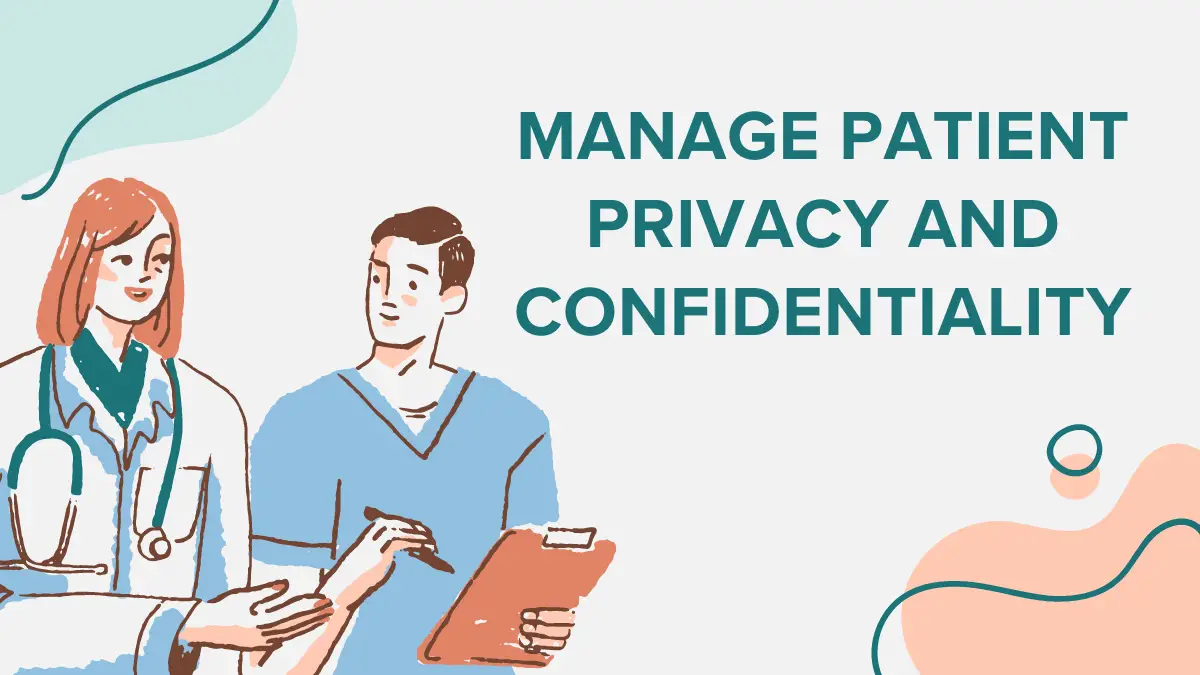In the realm of healthcare, patient privacy and confidentiality are paramount. The safeguarding of sensitive information not only upholds ethical standards but also ensures trust between healthcare providers and patients. In this comprehensive guide, we delve into the intricacies of managing patient privacy and confidentiality, offering insights and strategies to uphold these essential principles.
Table: Overview of HIPAA Privacy and Security Rules
| HIPAA Rule | Description |
|---|---|
| Privacy Rule | Regulates the use and disclosure of protected health information (PHI) by covered entities. |
| Security Rule | Establishes standards for securing electronic PHI (ePHI) to ensure confidentiality and integrity. |
| Breach Notification Rule | Requires covered entities to notify affected individuals, the Secretary of HHS, and, in some cases, the media following a breach of unsecured PHI. |
Section 1: Understanding Patient Privacy and Confidentiality
Patient Privacy:
Patient privacy refers to the right of individuals to keep their personal health information confidential. This includes medical history, treatment plans, test results, and any other information disclosed during the course of healthcare interactions.
Confidentiality:
Confidentiality goes hand in hand with privacy but extends beyond the patient’s right to control access to their information. It encompasses the duty of healthcare providers to safeguard this information from unauthorized access or disclosure.
Section 2: Legal and Ethical Framework
HIPAA Compliance:
The Health Insurance Portability and Accountability Act (HIPAA) sets the standard for protecting sensitive patient data. Understanding and adhering to HIPAA regulations is crucial for maintaining patient privacy and confidentiality.
Ethical Obligations:
Beyond legal requirements, healthcare professionals have ethical obligations to protect patient privacy. Codes of ethics, such as those outlined by medical associations, provide guidelines for maintaining confidentiality and respecting patient autonomy.
Section 3: Best Practices for Managing Patient Privacy
Access Controls:
Implement robust access controls to limit access to patient information only to authorized personnel. This may include password protection, encryption, and user authentication measures.
Training and Education:
Educate staff members on the importance of patient privacy and confidentiality. Regular training sessions can ensure that all staff members understand their roles and responsibilities in safeguarding patient information.
Secure Communication Channels:
Utilize secure communication channels for transmitting sensitive patient data. Encrypted emails, secure messaging platforms, and virtual private networks (VPNs) can help prevent unauthorized interception of patient information.
Section 4: Technology Solutions
Electronic Health Records (EHRs):
EHR systems offer a centralized repository for patient information but require robust security measures to protect against data breaches. Regular updates, encryption, and access controls are essential for securing EHRs.
Data Encryption:
Encrypting patient data both at rest and in transit adds an extra layer of protection against unauthorized access. Encryption algorithms such as AES (Advanced Encryption Standard) can help safeguard sensitive information.
Section 5: Challenges and Solutions
Data Breaches:
Data breaches pose a significant threat to patient privacy, potentially exposing sensitive information to unauthorized parties. Implementing robust cybersecurity measures and conducting regular security audits can help mitigate this risk.
Third-Party Vendors:
Many healthcare organizations rely on third-party vendors for services such as cloud storage or telehealth platforms. It’s crucial to vet these vendors carefully and ensure they have adequate security measures in place to protect patient information.
Section 6: Case Study: Implementing Patient Privacy Measures
In this section, we present a case study of a healthcare organization that successfully implemented measures to enhance patient privacy and confidentiality. By following best practices and leveraging technology solutions, they were able to safeguard patient information effectively.
Conclusion:
In conclusion, managing patient privacy and confidentiality is a multifaceted endeavor that requires a combination of legal compliance, ethical considerations, and technological solutions. By implementing best practices, staying informed about emerging threats, and prioritizing patient trust, healthcare organizations can uphold the highest standards of privacy and confidentiality in their operations.


